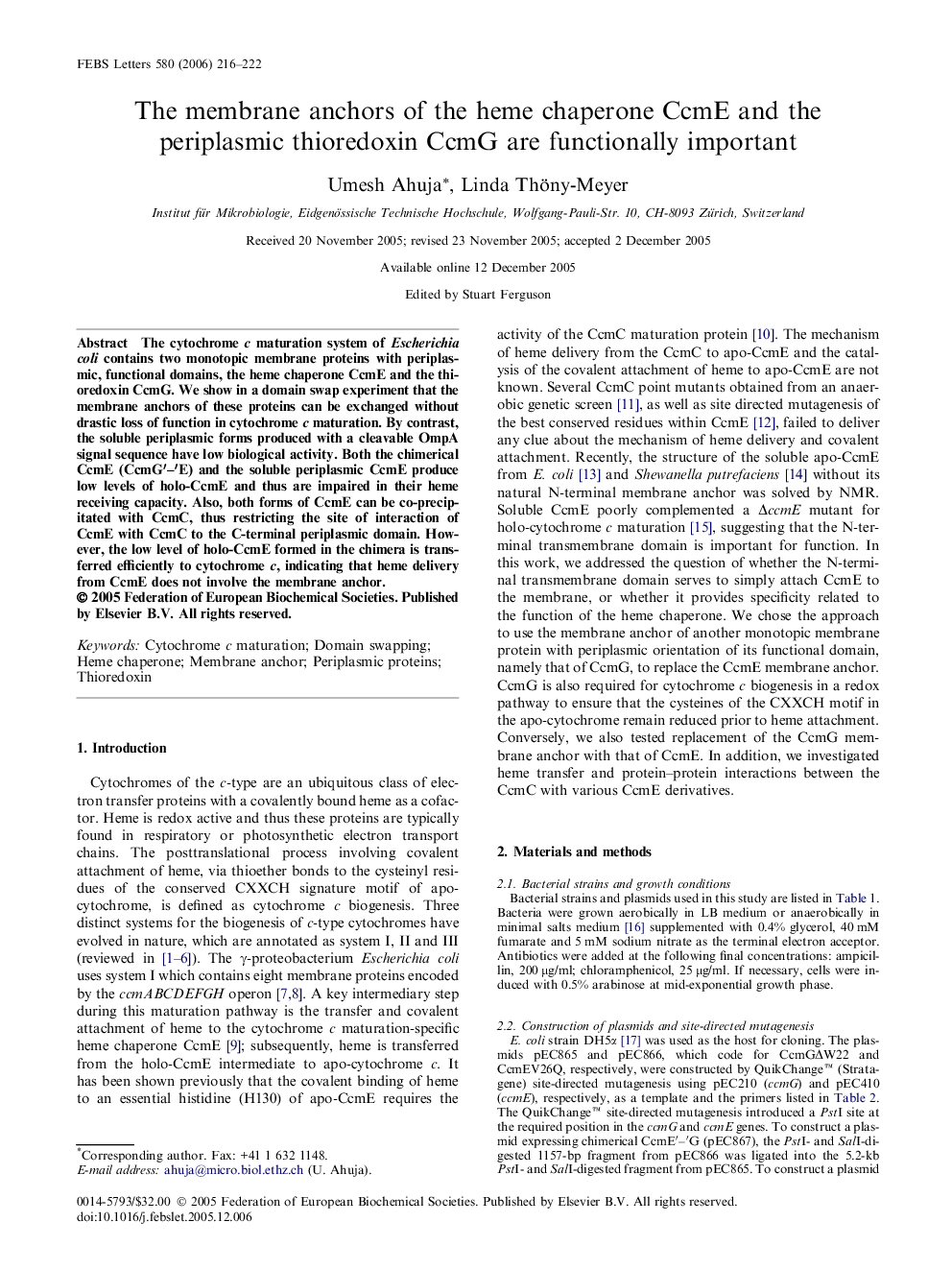| Article ID | Journal | Published Year | Pages | File Type |
|---|---|---|---|---|
| 2052233 | FEBS Letters | 2006 | 7 Pages |
The cytochrome c maturation system of Escherichia coli contains two monotopic membrane proteins with periplasmic, functional domains, the heme chaperone CcmE and the thioredoxin CcmG. We show in a domain swap experiment that the membrane anchors of these proteins can be exchanged without drastic loss of function in cytochrome c maturation. By contrast, the soluble periplasmic forms produced with a cleavable OmpA signal sequence have low biological activity. Both the chimerical CcmE (CcmG′–′E) and the soluble periplasmic CcmE produce low levels of holo-CcmE and thus are impaired in their heme receiving capacity. Also, both forms of CcmE can be co-precipitated with CcmC, thus restricting the site of interaction of CcmE with CcmC to the C-terminal periplasmic domain. However, the low level of holo-CcmE formed in the chimera is transferred efficiently to cytochrome c, indicating that heme delivery from CcmE does not involve the membrane anchor.
